Table of contents
- Semi-active chassis from Mupo in the test Magnetorheological chassis for motorcycles
- Fluid incredibly versatile
- 1,000 control cycles per second
- Travel enduro almost seems to be floating
- System works pretty well
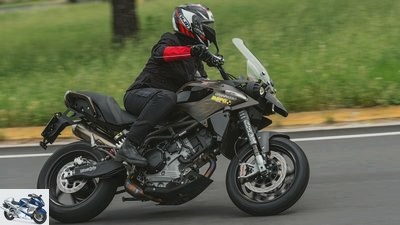
Cervetti
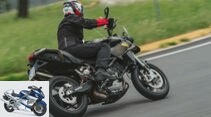
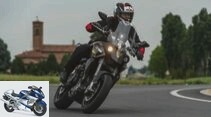
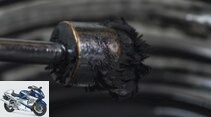
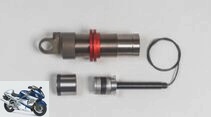
8th pictures
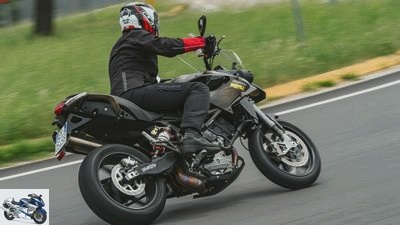
Cervetti
1/8
“Mupo Magneto” is the name of the magnetorheological chassis.
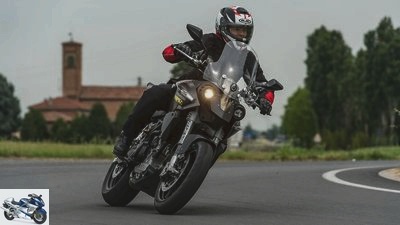
Cervetti
2/8
MOTORRAD employee Eva Breutel was able to try out the system in Italy.
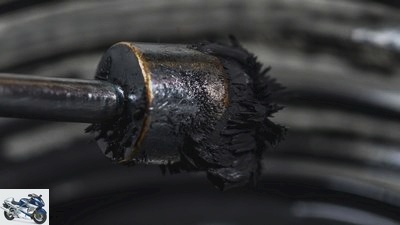
Mupo
3/8
The fluid replaces the usual damper oil and contains tiny metal particles. They are based on magnetic fields that are created by magnets at the end of the damper pistons.
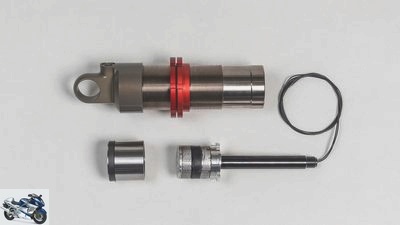
Mupo
4/8
There are two for the fork (shown in the next picture) and one for the shock absorber.
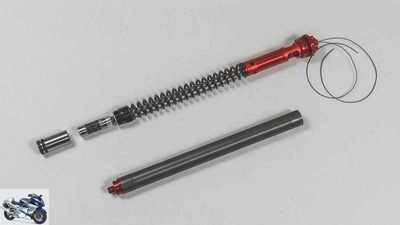
Mupo
5/8
The distribution of the metal particles, controlled by a magnetic field, changes the viscosity of the liquid and thus the damping of the spring elements
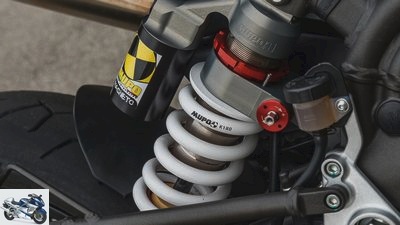
Mupo
6/8
The fun is not cheap. In Germany there is the system at the importer Zupin.
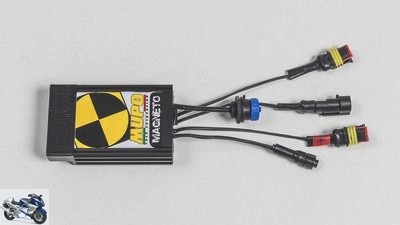
Mupo
7/8
The kit consists of a cartridge for the fork, shock absorber, control unit and wiring and costs 3,490 euros.
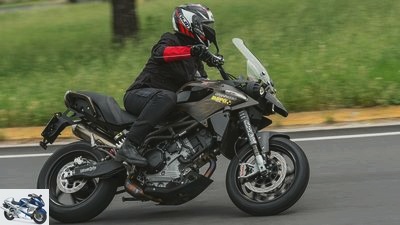
Cervetti
8/8
Assembly is not included in the price.
counselor
technology & future
Semi-active chassis from Mupo in the test
Semi-active chassis from Mupo in the test
Magnetorheological chassis for motorcycles
Semi-active chassis are becoming increasingly popular. The Italian specialist Mupo is now bringing a system that is supposed to adapt to the surface and driving style even faster than others: the first magnetorheological chassis for motorcycles.
Eva Breutel
08/03/2017
The sophisticated technology that Mupo uses is based on the use of controlled magnetic fields. Audi, Lamborghini and Ferrari have been using the technology in the form of magnetorheological shock absorber systems for a long time, but so far it has not existed in the motorcycle sector. Now the experts at the small suspension manufacturer Mupo, which is known for its racing successes near Bologna, are offering appropriate retrofit kits. They want to help motorcycles off-the-peg to a semi-active chassis that adapts itself to changing road conditions and driving style in a flash and has the right fork and shock absorber ready: sometimes soft, sometimes sporty and hard.
Buy complete article

Semi-active chassis from Mupo in the test
Magnetorheological chassis for motorcycles
2 pages) as PDF
€ 2.00
Buy now
Fluid incredibly versatile
With traditional forks and struts, damping is basically achieved by changing the flow of damper oil inside the cylinder. In the magnetorheological chassis, on the other hand, it is not the oil flow that changes, but the viscosity of the oil, which is actually a so-called magnetorheological fluid. It is interspersed with microscopic metal particles that can be electrically polarized. The damper piston is provided with an electromagnet; Through an electrical connection, magnetic fields of different strengths can be generated, according to which the metal particles in the liquid are automatically aligned. The more metal particles get into the magnetic field, the thicker the oil becomes and the stronger the damping; the viscosity changes at lightning speed. “The liquid is incredibly versatile,” explains Professor Antonio Pietrosanto from the University of Salerno, who helped develop the system. “It can flow as easily as water, but it can also become as hard and impenetrable as cement.”
1,000 control cycles per second
Pietrosanto and his colleagues began researching the technology back in 2006. For this purpose the company Spring off was founded, an offshoot of the University of Salerno (www.springoff.it). The challenge for the engineers is to create appropriate magnetic fields and, above all, to control them. With the Mupo system, a small control unit is used for this purpose, which is connected to the fork and shock absorber. In addition to the electrical circuits, it contains the software that constantly measures the condition of the spring elements; further sensors on the motorcycle are not necessary. Depending on the measurements, the control element then sends current to the magnets. The size of the magnetic fields changes and with it the strength of the damping. Thanks to the cabling, the fork and shock absorber communicate with one another via the control unit, so their reactions are coordinated with one another. All of this takes place in milliseconds. “We have 1,000 control cycles per second,” explains Professor Pietrosanto. “This makes us faster than other semi-active systems that work mechanically.” They usually compare the target and actual state of the damping 500 times per second.
Travel enduro almost seems to be floating
But how does it go? The Mupo technicians provided a suitably modified Moto Morini Granpasso R for a brief driving experience, as well as the same model with conventional suspension elements to make the differences clear. In general, the magnetorheological chassis needs a few kilometers to develop its functionality, because the metal particles are deposited when not in use and have to mix again first. But then the compensatory reactions of the chassis are clearly noticeable on the deliberately chosen bumpy route. The thicker the pothole and the higher the speed, the better the system gets going; the travel enduro with its long suspension travel almost seems to float above the road.
System works pretty well
First conclusion: The first magnetorheological chassis for motorcycles works, and quite well. The basic setup of the fork and chassis can also be changed using a special app that can be used to access the control unit. However, the fun is not cheap. In Germany there is the system called Mupo Magneto at the importer Zupin (www.zupin.de). The kit consists of a cartridge for the fork, shock absorber, control unit and wiring and costs 3490 euros. Installation is not included in the price, but according to Mupo it should be easy.
Related articles
-
Safe on the move with semi-active chassis from ZF
BMW 7th pictures BMW 1/7 This is how potholes can disappear: The semi-active chassis system from ZF brings more calm to the motorcycle set-up, and thus…
-
ZF offers chassis systems for Indian FTR 1200
Indian accesories landing gear & Spring elements ZF offers chassis systems for Indian FTR 1200 advertisement ZF systems for Indian FTR 1200 ZF conquers…
-
fact 7th pictures fact 1/7 BMW HP4, the new S 1000 RR, Ducati Multistrada or Aprilia Caponord: they are all equipped with active damping components. ZF…
-
ZF equips Betamotor off-road bikes with chassis technology
beta accesories landing gear & Spring elements ZF equips Betamotor off-road bikes with chassis technology ZF equips off-road bikes Beta engine: perfectly…
-
BMW patent: anticipatory chassis
Security campaign Consideration has right of way BMW counselor technology & future BMW patent: anticipatory chassis BMW patent for predictive chassis…
-
Endurance test interim results of the BMW F 800 S
Artist motorcycles Endurance test interim results of the BMW F 800 S Endurance test interim results of the BMW F 800 S Noticeably inconspicuous The F 800…
-
Chassis special: Part 6 – Troubleshooting the front of the vehicle
archive accesories landing gear & Spring elements Chassis special: Part 6 – Troubleshooting the front of the vehicle Suspension special: troubleshooting…
-
Chassis special: Part 2 – fork damping
fact accesories landing gear & Spring elements Chassis special: Part 2 – fork damping Chassis special: fork damping Front wheel damping – the dream setup…
-
accesories landing gear & Spring elements Basic chassis set-up Basic chassis set-up Basic chassis set-up The chassis tuning begins with the inspection of…
-
Triumph Speed Twin: More chassis for more motorcycle
News 2022 New motorcycle items for 2022 Triumph Motorcycles 18th pictures Triumph Motorcycles 1/18 Triumph mainly worked on the chassis and brakes for…